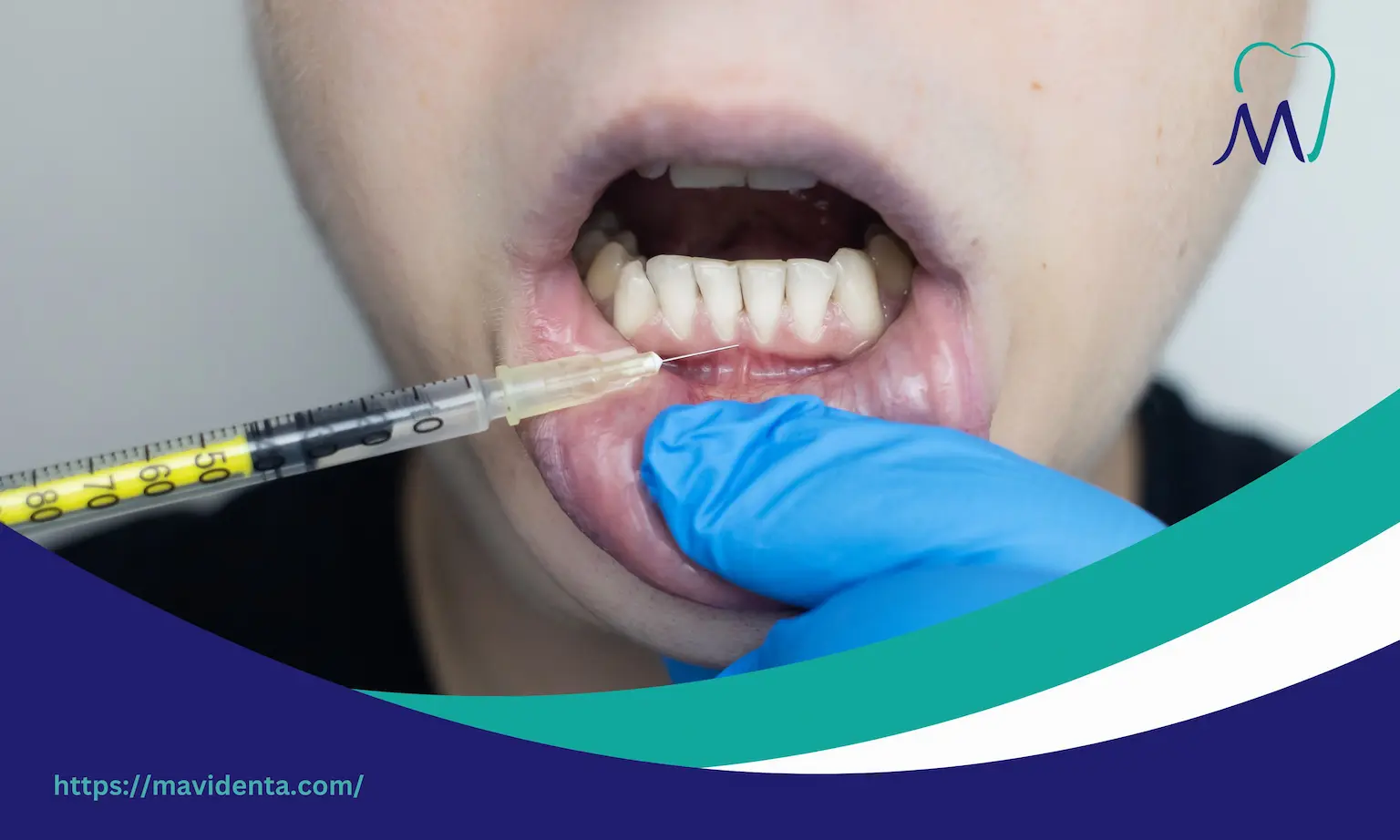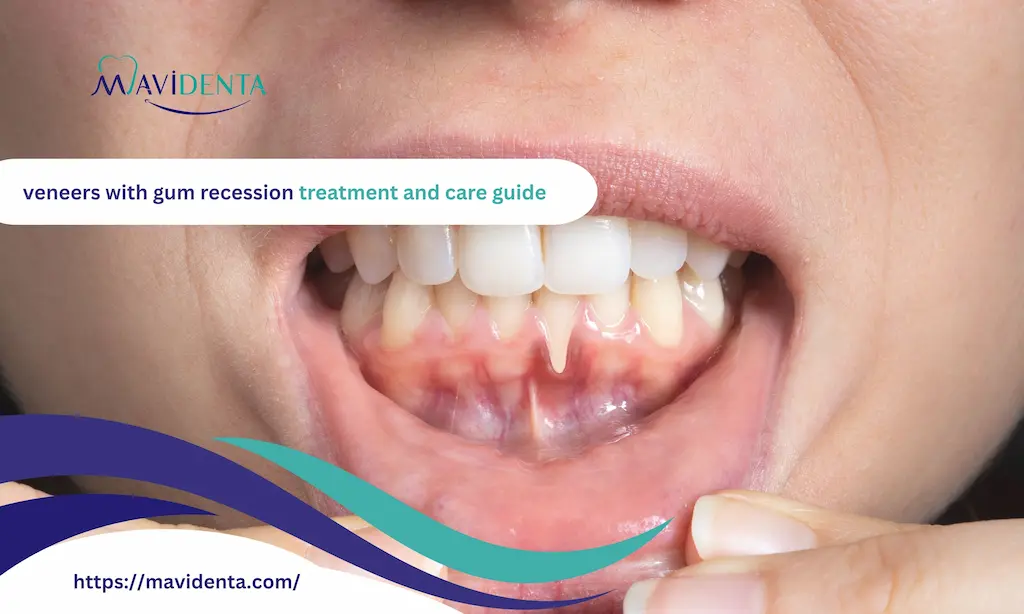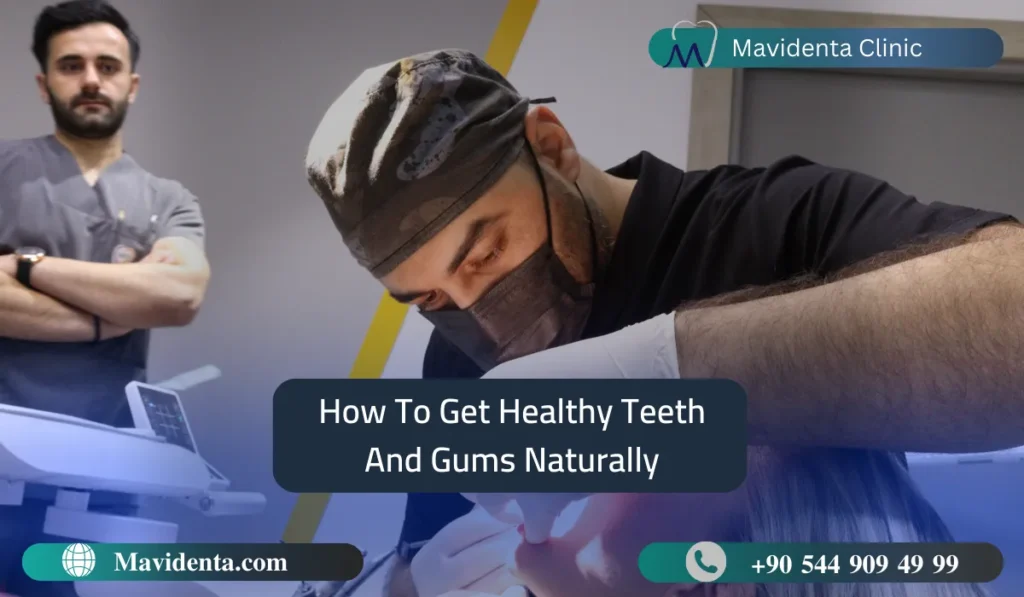The relationship between gum health and veneers is often overlooked. When the gum line starts to pull back, patients wonder if cosmetic options are still possible. Questions such as veneers with gum recession or how gum disease gets veneers treated arise frequently. In clinical dentistry, the answer depends on bone stability and tissue response. Solutions like gum veneers can replace lost contour and color, giving balance back to the smile.
What are gingival veneers and their role in cosmetic dentistry?
Aspect | Details |
|---|---|
| Definition | Gingival veneers are custom-made coverings that replace the missing gum tissue caused by recession or periodontal damage. |
| Purpose | They restore both color and contour, creating a balanced transition between teeth and gums. |
| Types | Dentists may choose removable gingival veneers for temporary correction or fixed gingival veneers for long-term stability. |
| Materials | Modern materials include silicone gingival veneers known for flexibility and lifelike texture. |
| Appearance | They are thin, gum-colored prosthetics designed to match individual tissue shade and shape. |
| Function | Used in full-smile rehabilitation to close spaces between teeth, cover exposed roots, and protect sensitive areas. |
| Aesthetic Role | They complete the aesthetic plan with veneers in gum recession, helping rebuild a natural and healthy look. |
Discover how to Treat Gum Infection Around Implant?
How do veneers with gum recession improve your smile?
- When gums shrink or pull away, the empty spaces around teeth become visible. Gingival veneers are made to replace this lost tissue and return the normal gum line. They restore color balance and protect sensitive root areas.
- Some patients use removable gingival veneers, easy to clean and simple to adjust. Others prefer fixed gingival veneers, which stay attached for longer and feel more natural in daily use.
- Newer types like silicone gingival veneers are soft and flexible. They adapt better to mouth movement and match the tissue shade accurately.
- In cosmetic work, Gum veneers make a major difference. Combined with veneers with gum recession, they help shape a smoother, healthier smile line that looks natural and balanced again.
What causes gum recession and how does it affect dental aesthetics?
- Gum recession usually starts slowly. In most patients, it comes from inflammation or constant brushing pressure. The soft tissue pulls away, and a small part of the root becomes visible.
- Gum infection or long-term irritation from plaque makes the situation worse. In advanced cases, gum disease gets veneers inquiries appear when people want to restore what the gums lost.
- As the margin moves down, teeth look longer and uneven. This affects the smile line and sometimes causes discomfort when brushing.
- Sensitivity is also common because roots are exposed and lack enamel protection.
- Many ask, Can you get veneers if the gums are receding? Yes, but only after stabilizing the tissue and treating any infection.
- Dentists plan veneers with gum recession carefully, matching gum color and tooth shape so the final result looks balanced. The aim is not only appearance but also comfort during speaking and eating.
How To Get Healthy Teeth And Gums Naturally Simple Guide.

What treatment options manage gum recession before getting veneers?
- Before any cosmetic plan, the dentist looks closely at the gums — how much they have receded, where the tissue is weak, and if there’s inflammation. Treating the cause always comes first.
- In many cases, gum cleaning or deep scaling is enough to remove bacteria that keep the gums irritated. Once the infection is under control, the tissue can start healing naturally.
- For patients with more serious gum loss, small grafts are used. A thin layer of tissue, often from the palate, is moved to cover the exposed roots and rebuild the gum contour.
- Mild cases may not need surgery. Changing brushing habits, using soft brushes, and applying desensitizing gels can stop further gum movement.
- After healing, dentists reassess the mouth to see if it’s ready for veneers with gum recession treatment. The idea is to place veneers only when the gums are firm and stable.
- Regular checkups later on help keep the tissue healthy, so the veneers last and the smile line stays even.
What is the process and what are the benefits of applying gingival veneers?
- The process starts with a full check of the gum level and tissue color. The dentist measures the exposed root area and notes how far the gum has receded.
- Impressions are then taken. A model is built so the technician can design thin, soft layers that sit naturally against the teeth.
- Silicone gingival veneers are used when flexibility and comfort are a priority. Fixed gingival veneers stay bonded for long periods, while removable gingival veneers can be cleaned easily at home.
- After fitting, the dentist checks speech and smile movement. Minor trimming is done to make sure the edge meets the teeth correctly.
- Gingival veneers permanently restore color and cover exposed roots, protecting them from temperature sensitivity.
- When used along with veneers with gum recession, the result is a natural line between tooth and gum, reducing visible gaps and creating a smooth, balanced smile.
Explore the Best Dental Implant Clinic in Istanbul.
What are the risks and long-term success factors for veneers on receded gums?
- The main concern with gum loss is maintaining strong adhesion between veneer and tooth surface. When tissue is missing, moisture control during bonding becomes more difficult, affecting precision and longevity.
- Veneers receding gum line complications may include mild irritation at the edge where veneer and gum meet. Proper contouring of margins helps prevent food accumulation and local inflammation.
- Poor hygiene or irregular cleaning can lead to receding gums after veneers, exposing new areas and changing the gum shape again.
- Stability also depends on the material type. Gingival veneers permanently made from flexible composite or silicone absorb small pressure changes and reduce strain on the gum border.
- Success rates are higher in patients who maintain balanced brushing habits and avoid excessive force near veneer margins.
How should you maintain and care for veneers with gum recession?
- Oral hygiene becomes more critical when gums are thin or receded. Brushing should be gentle, using a soft brush at an angle to clean the gum edge without causing further irritation.
- Areas close to veneers receding gum lines collect plaque faster. Cleaning with interdental brushes or water flossers helps remove buildup that normal brushing might miss.
- Avoid using whitening toothpaste with strong abrasives. These can wear away the bonding margin and make the gum more sensitive.
- For Gum veneers and other restorations, regular checkups allow the dentist to polish the surface and examine tissue color.
- If patients experience swelling or bleeding, it could be a sign of receding gums after veneers. Treating this early keeps the tissues stable.
- Silicone gingival veneers or gingival veneers last longer when supported by healthy gums. Following proper cleaning routines and attending reviews keeps veneers with gum recession natural and comfortable for many years.
Explore the best Dental Veneers in Turkey.
Why is Mavidenta the Best Place for veneers with gum recession?
- At Mavidenta, every case begins with a simple rule — understand the gums first. The team studies where the tissue has pulled back and how it affects the smile line. No step moves forward until the base is healthy.
- Periodontists and cosmetic dentists work side by side. One focuses on stability, the other on shape and color. That mix is what keeps the results steady.
- Materials are chosen carefully. Silicone gingival veneers feel soft and adapt to natural movement, while fixed gingival veneers suit patients who want a longer-term option.
- Design is done through digital scans, letting doctors build gum veneers that fit precisely, without repeated adjustments.
- Follow-up is part of the plan: small checks catch early signs of receding gums after veneers and gum recession keep everything stable.
- Patients treated for veneers with gum recession here usually notice one thing — the work looks natural and lasts. The team values quiet precision over speed, and that’s what makes the difference.
Conclusion
Managing gum loss and restoring smile harmony require precision and teamwork. Choosing veneers with gum recession is not only about covering exposed roots but rebuilding the natural line between tooth and gum. Each plan depends on tissue health, design accuracy, and long-term care. Success comes from steady follow-up and gentle hygiene, not speed. At Mavidenta, treatments focus on realistic results—healthy gums, balanced color, and stability that lasts—so patients regain comfort and confidence with a smile that looks and feels truly natural.
FAQ
How long do gingival veneers last?
Gingival veneers can last many years with good hygiene and regular follow-up.
What are silicone gingival veneers?
They are soft, flexible restorations designed to imitate natural gum texture and color.
Can smokers get veneers?
They can, but smoking slows healing and can stain both tooth and veneer surfaces.
What causes gum recession after veneers?
Receding gums after veneers often result from poor hygiene or excessive brushing pressure.
Can gum veneers be removed?
Yes, removable gingival veneers can be taken out for cleaning and replaced easily.
Are veneers safe for sensitive gums?
Yes, when placed on healthy tissue, they protect roots and reduce further irritation.
What do gum veneers look like?
They resemble thin pink layers that blend naturally with the gum and tooth line.



